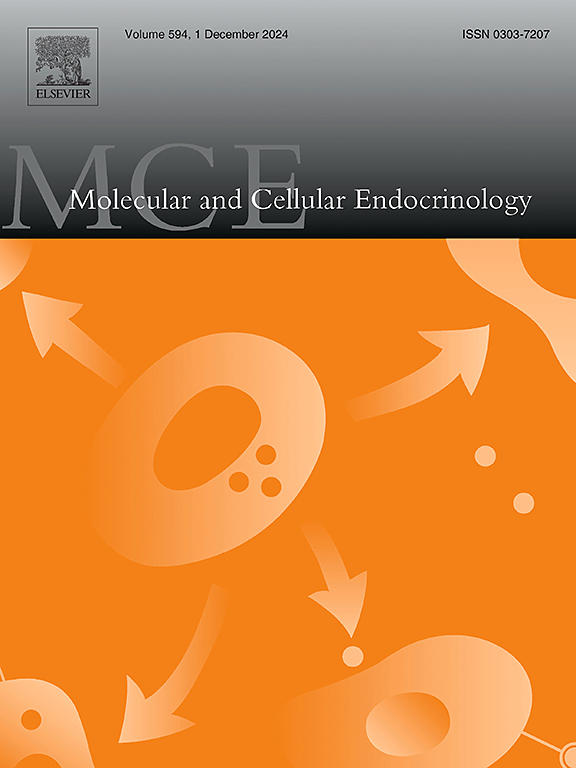Selenoprotein M protects cardiac endothelial cell integrity against high-glucose stress via enhancing Parkin-mediated mitophagy
IF 3.8
3区 医学
Q2 CELL BIOLOGY
引用次数: 0
Abstract
Selenoprotein M (SELENOM) has emerged as a crucial factor in maintaining cellular redox homeostasis and mitigating oxidative damage. This study aims to investigate its protective role in cardiac endothelial cells under hyperglycemic stress, a condition commonly associated with diabetes mellitus and its cardiovascular complications. Diabetic mice model and human umbilical vein endothelial cells (HUVECs) were applied for in vivo and in vitro studies. Results reveal that hyperglycemia significantly downregulates SELENOM expression in both diabetic mouse hearts and primary cultured cardiac endothelial cells. Overexpression of SELENOM in HUVECs mitigated high-glucose-induced FITC-Dextran diffusion and the loss of transendothelial electrical resistance. Additionally, SELENOM overexpression decreased reactive oxygen species (ROS) levels, preserved tight junction protein expression, and maintained cellular structural integrity under hyperglycemic conditions. Furthermore, SELENOM overexpression attenuated high-glucose-induced mitochondrial apoptosis. High-glucose conditions decreased Parkin and increased p62 and Beclin1 expressions. SELENOM overexpression restored Parkin levels and promoted co-localization of LAMP1 and TOMM20. Knockdown of Parkin significantly attenuated these protective effects, suggesting the importance of Parkin in Selenoprotein M-mediated mitophagy. Collectively, these findings suggest that Selenoprotein M enhances Parkin-mediated mitophagy to protect endothelial cells from hyperglycemic stress, offering potential therapeutic insights for diabetic cardiovascular complications.
硒蛋白M通过增强Parkin介导的有丝分裂来保护心脏内皮细胞的完整性,使其免受高葡萄糖应激的影响。
硒蛋白M(SELENOM)已成为维持细胞氧化还原平衡和减轻氧化损伤的关键因素。本研究旨在探讨硒蛋白 M 在高血糖应激状态下对心脏内皮细胞的保护作用,高血糖应激状态通常与糖尿病及其心血管并发症有关。研究采用糖尿病小鼠模型和人脐静脉内皮细胞(HUVECs)进行体内和体外研究。结果发现,高血糖会显著下调糖尿病小鼠心脏和原代培养的心脏内皮细胞中SELENOM的表达。SELENOM在HUVECs中的过表达减轻了高血糖诱导的FITC-二聚体扩散和跨内皮电阻的损失。此外,SELENOM的过表达降低了活性氧(ROS)水平,保护了紧密连接蛋白的表达,并在高血糖条件下保持了细胞结构的完整性。此外,SELENOM的过表达还减轻了高血糖诱导的线粒体凋亡。高血糖条件减少了Parkin的表达,增加了p62和Beclin1的表达。SELENOM的过表达恢复了Parkin的水平,并促进了LAMP1和TOMM20的共定位。敲除Parkin能明显减弱这些保护作用,表明Parkin在硒蛋白M介导的有丝分裂中的重要性。总之,这些研究结果表明,硒蛋白M能增强Parkin介导的有丝分裂,保护内皮细胞免受高血糖应激,为糖尿病心血管并发症提供了潜在的治疗思路。
本文章由计算机程序翻译,如有差异,请以英文原文为准。
求助全文
约1分钟内获得全文
求助全文
来源期刊

Molecular and Cellular Endocrinology
医学-内分泌学与代谢
CiteScore
9.00
自引率
2.40%
发文量
174
审稿时长
42 days
期刊介绍:
Molecular and Cellular Endocrinology was established in 1974 to meet the demand for integrated publication on all aspects related to the genetic and biochemical effects, synthesis and secretions of extracellular signals (hormones, neurotransmitters, etc.) and to the understanding of cellular regulatory mechanisms involved in hormonal control.
 求助内容:
求助内容: 应助结果提醒方式:
应助结果提醒方式:


